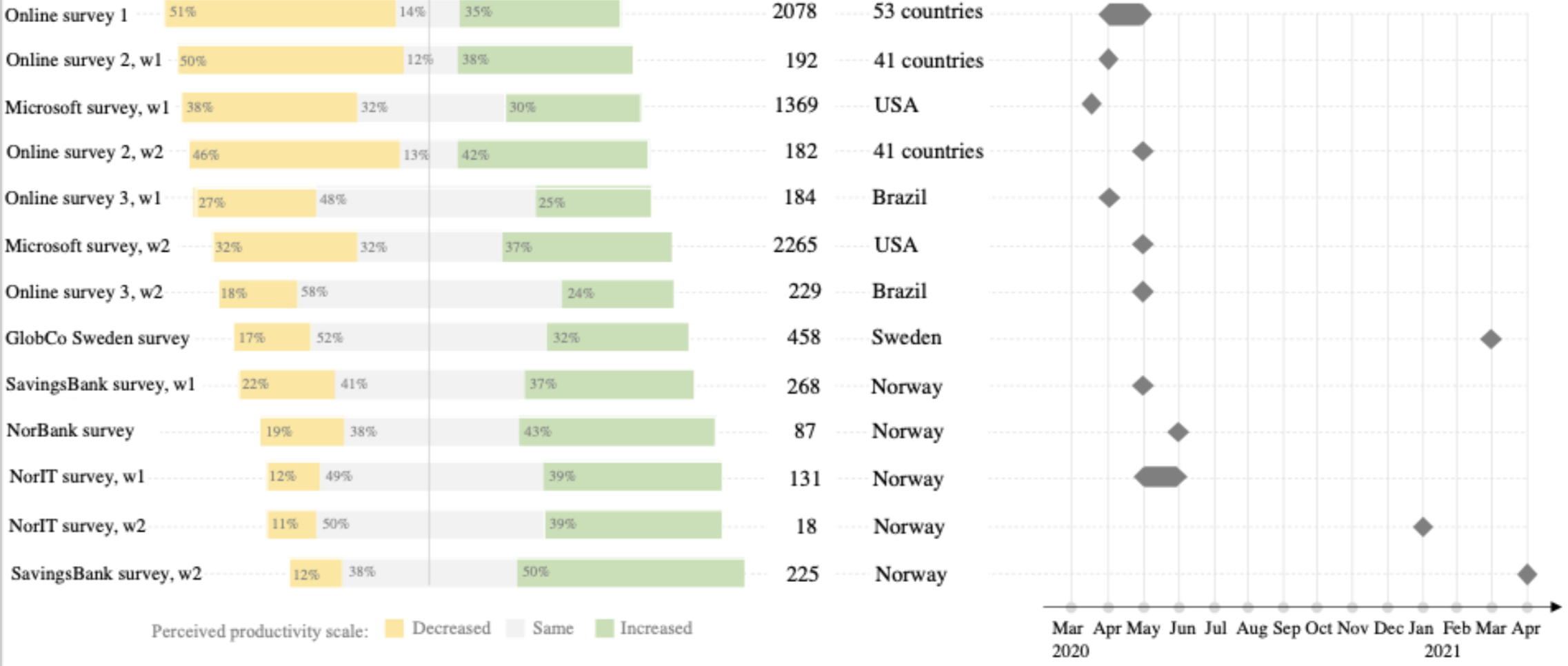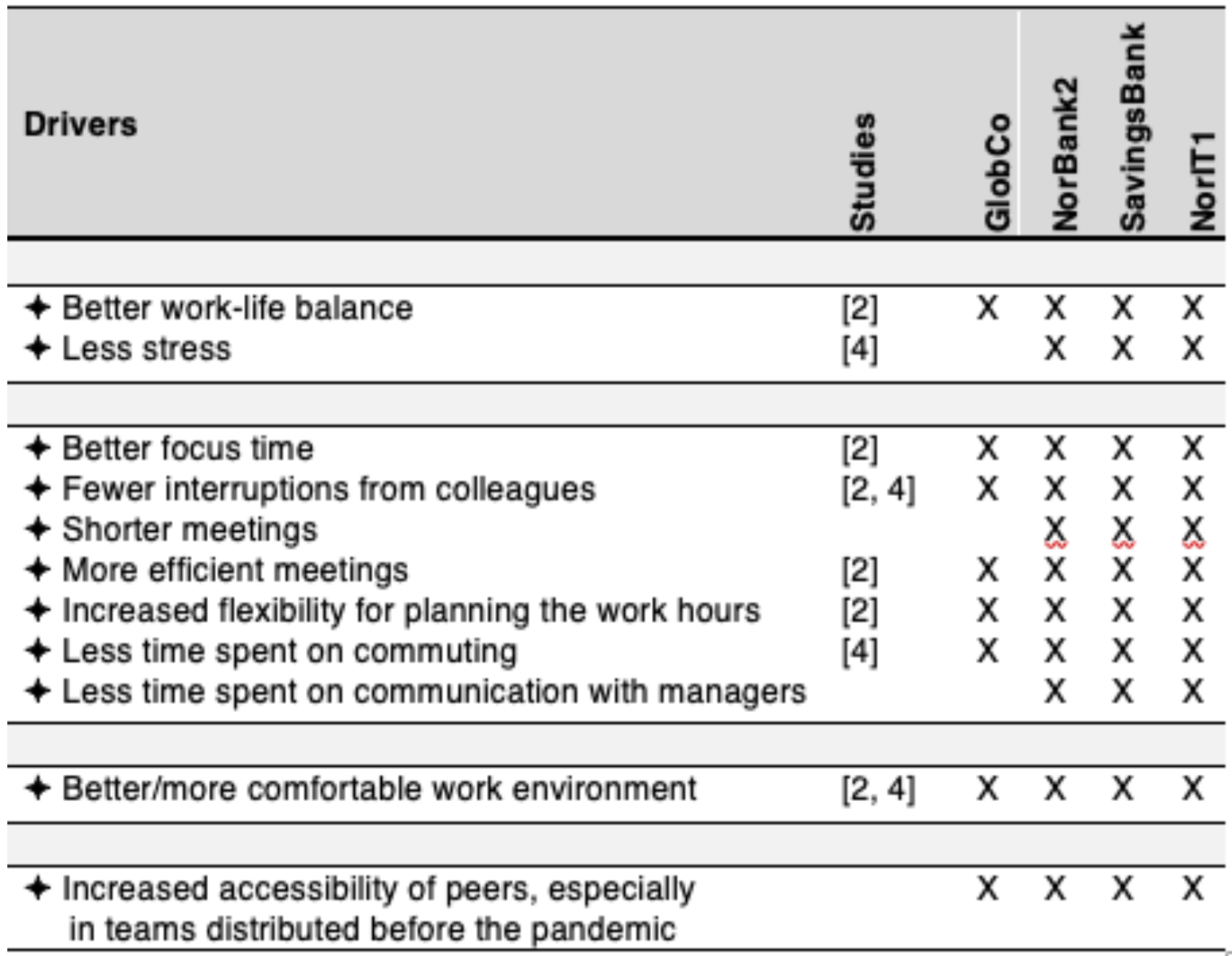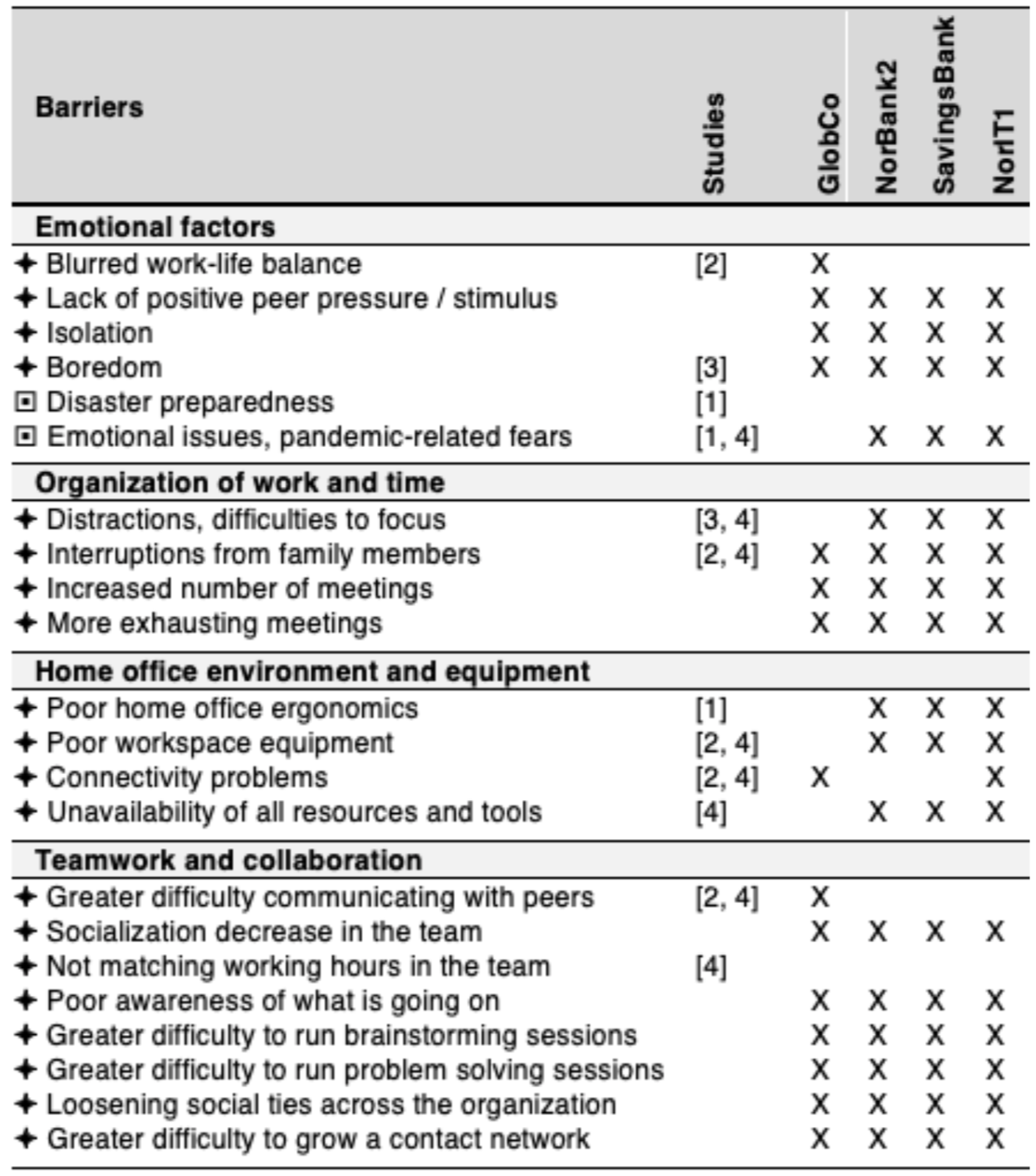Remote working has been a hot topic and many would like to know more about it. This is a summary of research insights on the perceived productivity during the COVID-19 pandemic.
Brief description of the research and evidence: To understand work from home, we analyzed data from six corporate surveys from four Scandinavian companies and results of seven published surveys, standardizing scales across all surveys. We sought explanations by analyzing responses to open-ended questions and interviews.
Key results and conclusions based on the combined results of 7686 data points:
- On average perceived productivity have not changed significantly;
- There are developers who report being more productive, and developers being less productive when working from home;
- Positively affected in some surveys form large groups of respondents (up to 50%) and mention benefiting from a better organization of work, increased flexibility and focus.
- Groups of negatively affected respondents (up to 51%) exist too; they complain about the challenges related to remote teamwork and collaboration, emotional issues, distractions and poor home office environment and equipment;
- Longitudinal surveys show positive trends – productivity at the end of the first pandemic year is better than in the earlier months of the pandemic.

Our conclusions are not that surprising – work from home is not for everyone.
Results in more detail
Figure 1 summarizes the evidence from the total of 7696 data points from thirteen surveys. The results show that respondents are divided into 1) negatively affected, 2) positively affected, and 3) not affected by the work from home mode, with different distributions reported in different studies. Among the thirteen surveys we can see three surveys that report about half of the respondents being negatively affected (Online survey 1 and 2) and ten surveys that report predominantly no change or positive affect of WFH on perceived productivity. Scandinavian company surveys emerge as a block of more optimistic studies.
The decreased productivity when moving from collocated to fully distributed setup is not that surprising. Distributed work is infamous for being considerably less productive than collocated work due to impaired teamwork. What we find surprising is that some WFH developers perceive being more productive. These range from 24% in the first wave of Oliveira et al. to 50% in the second wave of SavingsBank. Also, in studies that performed two-wave analysis of the changes in perceived productivity (Microsoft survey, Online Survey 2 and 3, SavingsBank and NorIT), the second wave responses were more positive than those in the first wave, which is contradictory to what we find in Spotify.
To understand the reasons for the changes in perceived productivity, the researchers have aggregated factors emerging from qualitative analysis of survey responses and interviews performed in two case companies (see a summary in the tables below). Those interested in more details about the different productivity barriers and drivers read the testimonies of the research participants, please, visit the research article (see details at the end).
Note: Factors related to pandemic are marked with, related to WFH marked with

